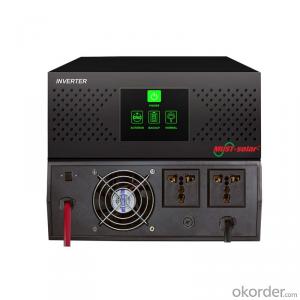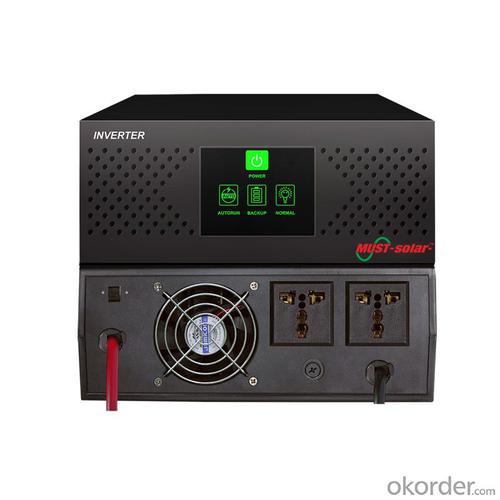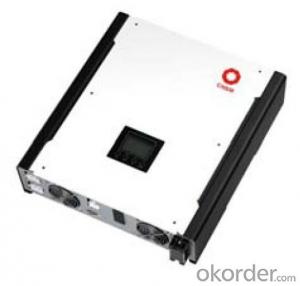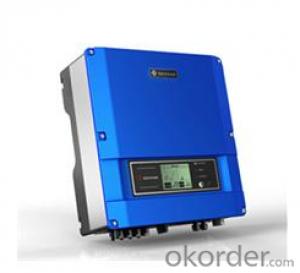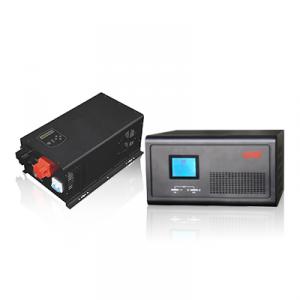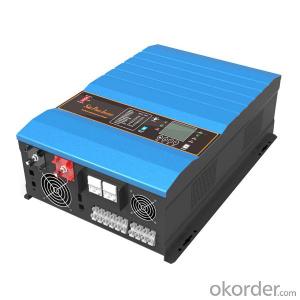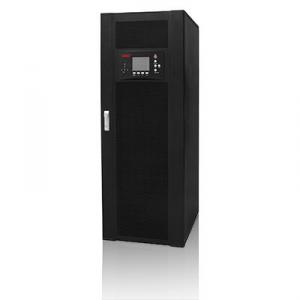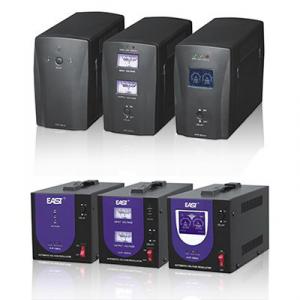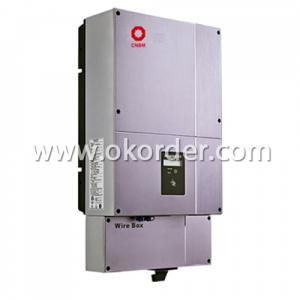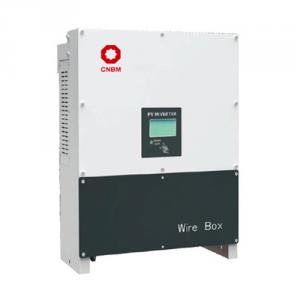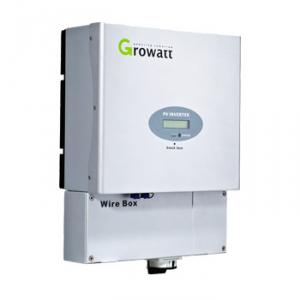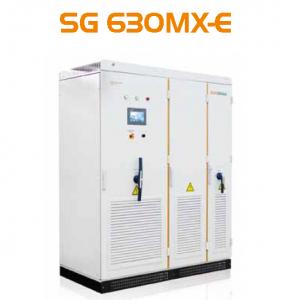Anern Solar Inverter with Excellent Quality 2024 Very Popular New Function
- Loading Port:
- China main port
- Payment Terms:
- TT or LC
- Min Order Qty:
- 50 unit
- Supply Capability:
- 10000 unit/month
OKorder Service Pledge
OKorder Financial Service
You Might Also Like
Pure Sine Wave Inverter EP2000 Series 300W/400W with LED Indication, Single Phase
Features:
This high efficiency microprocessor controlled DC-AC inverter converts 12 Volts DC (Nominal) 300/400Watts of pure sine-wave AC power at 100/120/220/230 Volts, 50/60 Hz.
The unit comes with in-built 7 Amp transfer switch and a 20 Amp circuit breaker.
Input battery cable lugs are provided and the AC output is obtained through hardwire connection.
Features include overload, short circuit, over-temperature, under & over voltage protections, and selectable. emergency home backup.
Safe to use and features over-current, over- temperature and surge protection.
Simply connect the inverter to a battery and plug your AC devices into it, then you’ve got portable power.
Applications:
Can be used with different domestic appliance TV, Refrigerator ,Fan , air conditioner ,induction cooker , micro-wave oven etc .
Specifications:
MODEL | EP2000 Series | 300W | 400W | |
INPUT | Phase | Single | ||
Voltage | 110/120VAC or 220/230/240VAC | |||
Voltage Range | -35% ~ +25% for selected nominal voltage | |||
Frequency | 50Hz / 60Hz ( Auto Sensing) | |||
Frequency Range | 47Hz ~ 65Hz, | |||
OUTPUT | Phase | Single | ||
Voltage(Btt. Mode) | 110/120VAC or 220/230/240VAC | |||
Voltage Regulation(Batt. Mode) | ±3% of selected output voltage | |||
Frequency | 50Hz or 60Hz | |||
Frequency Regulation (Batt. Mode) | Auto Select for 50/60Hz | |||
Output Waveform | Pure sine wave | |||
BATTERY | Battery Type | Sealed ,maintenance-free lead acid | ||
Back up Time (at a PC load with 15"monitor) | Depends on the capacity of the external battery | |||
Charging methdd | Smart pulse charging with two charging modes: | |||
TRANSFER TIME | Typical | <20ms< td=""> | ||
INDICATOR | Led Indicator | manage backup time, balance power loads and prevent UPS overloads | ||
Audible alarm | Normal city power | Green | ||
Backup mode | Red | |||
Overload alarm | Continuous beep | |||
PROTECTION | Full Protection | Discharge, overcharge, and overload protection | ||
PHYSICAL | Dimension, DXWXH (mm) | 312*262*118(mm) | ||
Net Weight (kgs) | 6.5KG | 7.5KG | ||
ENVIRONMENT | Operating Environment | 0~40 Degrees Centigrade, 0~90% relative humidity (non-condensing) | ||
Noise Level | Less than 40dB at 1M | |||
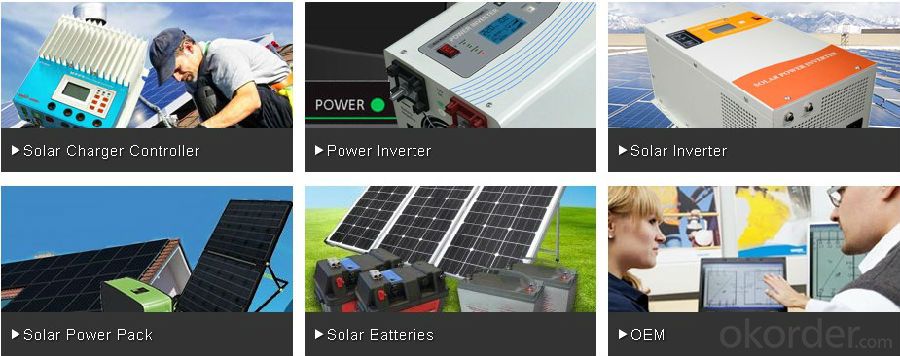

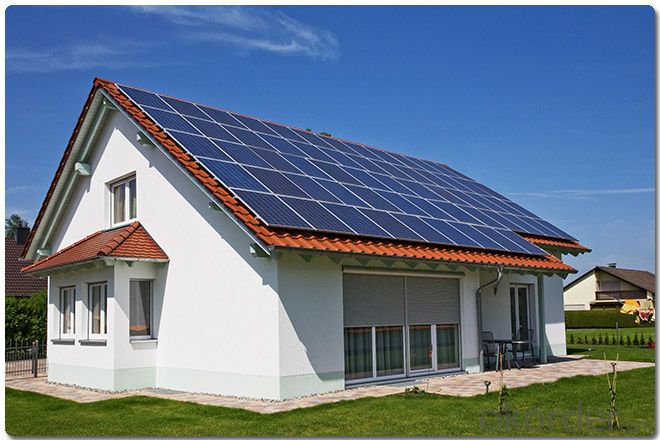
Warrenty
provides a 1~3 year limited warranty (“Warranty”) against defects in materials and workmanship for its Uninterruptible power supply, Power inverter/chargers, Solar charge controllers, Battery Products (“Product”).
The term of this Warranty begins on the Product(s) initial purchase date, or the date of receipt of the Product(s) by the end user, whichever is later. This must be indicated on the invoice, bill of sale, and/or warranty registration card submitted to MUST-Solar. This Warranty applies to the original MUST-Solar Product purchaser, and is transferable only if the Product remains installed in the original use location.
FAQ
1. How do I decide which system is right for me ?
For protection from long outages, include a generator or solar panels in your Must solar system. Shorter outages can be handled by a battery-only system.
2. Where my system will be installed ?
Must solar systems are usually wall-mounted near a home's main electrical (circuit breaker) panel.
3. How do I install my system ?
A must solar backup inverter is connected to a home electric system , we will supply detailed installation manual and videos for our customers .
- Q: Can a solar inverter be used in areas with frequent power outages?
- Yes, a solar inverter can be used in areas with frequent power outages. Solar inverters are designed to convert the direct current (DC) electricity generated by solar panels into alternating current (AC) electricity that can be used to power household appliances and electronics. In the event of a power outage, a solar inverter can continue to supply electricity to the connected loads, provided that the solar panels are receiving sunlight. However, it is important to note that a solar inverter alone may not provide a constant power supply during extended power outages unless it is paired with a battery storage system.
- Q: Can a solar inverter be installed outdoors?
- Yes, a solar inverter can be installed outdoors. However, it is important to ensure that the inverter is designed to be weatherproof and can withstand the elements. Additionally, proper ventilation and protection from direct sunlight should be considered when installing the inverter outdoors.
- Q: Can a solar inverter be used with solar-powered desalination systems?
- Yes, a solar inverter can be used with solar-powered desalination systems. Solar inverters are essential components in solar power systems as they convert the direct current (DC) electricity generated by solar panels into alternating current (AC) electricity that can be used to power various devices, including desalination systems. By connecting the solar panels to a solar inverter, the generated solar energy can be efficiently utilized to power the desalination system, making it a sustainable and environmentally friendly solution for producing fresh water.
- Q: What is the role of a power factor correction circuit in a solar inverter?
- The role of a power factor correction circuit in a solar inverter is to optimize the power factor of the electrical system. It ensures that the energy being generated by the solar panels is efficiently utilized by balancing the reactive power and reducing harmonic distortions. This helps in improving the overall system efficiency, reducing energy losses, and complying with grid regulations.
- Q: How does a solar inverter handle grid disturbances (voltage sags, swells, flickers)?
- A solar inverter handles grid disturbances such as voltage sags, swells, and flickers by continuously monitoring the grid's voltage and adjusting its output accordingly. When a voltage sag occurs, the inverter increases its output voltage to compensate and ensure a stable power supply. Similarly, during a voltage swell, the inverter reduces its output voltage to prevent overloading the system. In the case of flickers, the inverter rapidly responds by regulating its output to minimize any fluctuations and maintain a consistent power flow. Overall, the solar inverter's advanced control mechanisms enable it to effectively manage grid disturbances and ensure reliable operation of the solar power system.
- Q: Can a solar inverter be used with different grid voltages?
- No, a solar inverter cannot be used with different grid voltages. Solar inverters are designed to convert the DC power generated by solar panels into AC power that matches the specific voltage and frequency of the grid. Using a solar inverter with different grid voltages can cause damage to the inverter and can also be a safety hazard.
- Q: The working principle of photovoltaic grid - connected inverter
- Full-bridge inverter circuit to overcome the shortcomings of the push-pull circuit, the power transistor to adjust the output pulse width, the output AC voltage RMS that changes. Since the circuit has a freewheeling circuit, even if the inductive load, the output voltage waveform will not be distorted. The disadvantage of this circuit is that the upper and lower arms of the power transistor are not common, so you must use a special drive circuit or use isolated power supply. In addition, in order to prevent the upper and lower arm co-conduction, must be designed to turn off after the conduction circuit, that must be set dead time, the circuit structure is more complex.
- Q: What is the maximum power capacity of a solar inverter?
- The maximum power capacity of a solar inverter can vary depending on its specific model and design. However, typical residential solar inverters have a power capacity range of 1-10 kilowatts (kW), while commercial and industrial inverters can range from 10 kW to several megawatts (MW).
- Q: Can a solar inverter be used in systems with different module types?
- Yes, a solar inverter can be used in systems with different module types. Solar inverters are designed to convert the direct current (DC) generated by the solar panels into alternating current (AC) that can be used to power various household appliances and be fed into the electrical grid. They are typically compatible with a wide range of module types, including monocrystalline, polycrystalline, and thin-film solar panels. However, it is important to ensure that the inverter's specifications and capacity align with the specific module types being used to ensure optimal performance and efficiency.
- Q: What are the main components of a solar inverter system?
- The main components of a solar inverter system include the solar panels, the inverter itself, and various electrical components. Solar panels are the primary component of a solar inverter system. These panels are made up of photovoltaic cells that convert sunlight into direct current (DC) electricity. They are typically installed on rooftops or in open areas to maximize exposure to sunlight. The inverter is another crucial component of the system. Its main function is to convert the DC electricity produced by the solar panels into alternating current (AC) electricity, which is the type of electricity used in most homes and businesses. Inverters also regulate the flow of electricity, ensuring it matches the voltage and frequency of the utility grid. Other electrical components are also present in a solar inverter system. These may include wiring, switches, fuses, and circuit breakers, which help to connect the solar panels, inverter, and other equipment to the electrical grid. Additionally, monitoring systems and data loggers are often included to track the performance of the system and provide valuable information on energy production. Finally, a solar inverter system may also include a battery storage system. This allows excess electricity generated by the solar panels to be stored for later use, such as during periods of low sunlight or during power outages. Battery storage systems are becoming increasingly popular as they provide greater energy independence and the ability to utilize solar energy even when the sun is not shining. Overall, the main components of a solar inverter system include solar panels, the inverter, electrical components, and potentially a battery storage system. Each component plays a vital role in harnessing solar energy and converting it into usable electricity for homes and businesses.
Send your message to us
Anern Solar Inverter with Excellent Quality 2024 Very Popular New Function
- Loading Port:
- China main port
- Payment Terms:
- TT or LC
- Min Order Qty:
- 50 unit
- Supply Capability:
- 10000 unit/month
OKorder Service Pledge
OKorder Financial Service
Similar products
Hot products
Hot Searches
Related keywords
